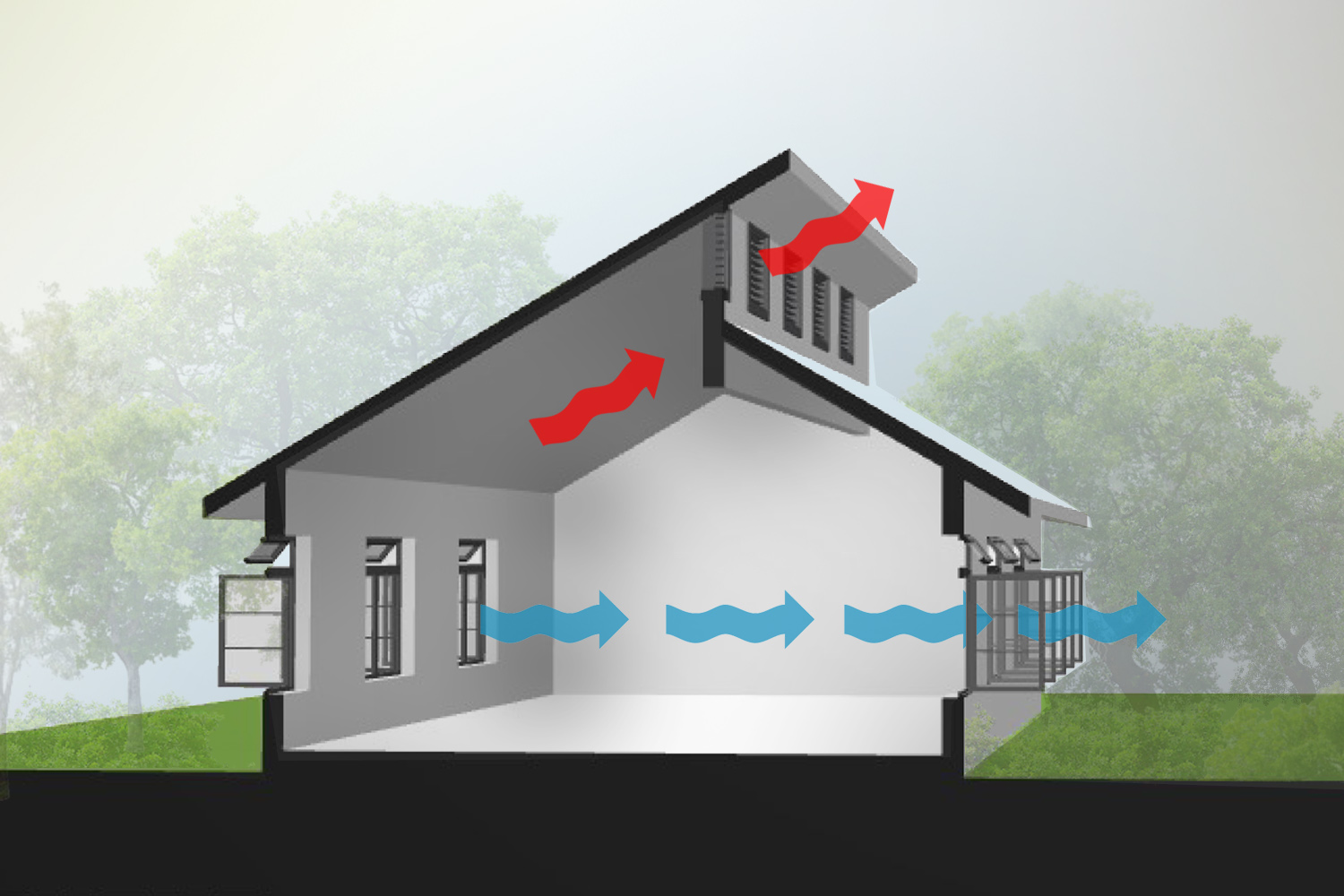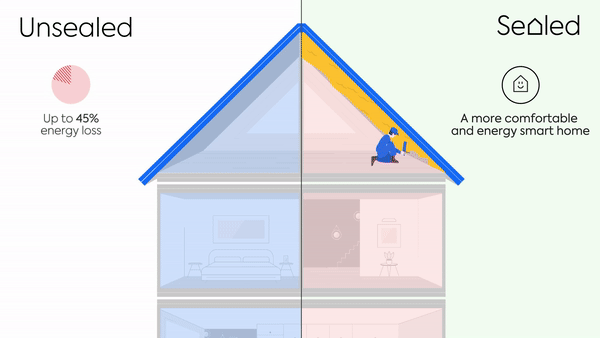The Complete Beginner’s Guide to Home Ventilation Melbourne
Wiki Article
Comprehending the Significance of Home Air Flow for a Healthier Living Environment
Home ventilation plays a crucial duty in maintaining a healthy living setting. It assists in the exchange of outdoor and interior air, which is very important for improving air quality. Without correct ventilation, homes can come to be breeding grounds for irritants and pollutants. The effects of inadequate air blood circulation can be significant. This brings up the query of just how house owners can successfully execute ventilation approaches to protect their wellness and health. Recognizing these approaches is vital.
The Fundamentals of Home Ventilation
Home ventilation offers as an essential component of interior air quality and comfort. It entails the procedure of exchanging stagnant indoor air with fresh exterior air, consequently decreasing moisture and controlling temperature level. Correct ventilation systems can consist of natural techniques, such as open windows and vents, in addition to mechanical systems, such as exhaust followers and air exchangers. Efficient home air flow aids avoid concerns like indoor mold development and the accumulation of harmful bits. It likewise improves total energy effectiveness, as well-ventilated rooms can maintain comfortable temperature levels with much less reliance on heating and cooling down systems. Recognizing the basics of home ventilation is important for homeowners seeking to create a much healthier living setting for themselves and their families.
Common Sources of Indoor Air Contamination

Although many might not understand it, indoor air contamination can stem from various sources within a house. Typical factors include volatile organic compounds (VOCs) given off from paints, solvents, and cleaning items. Household devices, such as gas stoves and fire places, can launch harmful gases like carbon monoxide gas and nitrogen dioxide. Additionally, mold and mold flourish in wet locations, launching spores that affect air high quality. Animal dander, dirt mites, and pollen can build up indoors, additional exacerbating air pollution degrees. Smoking cigarettes inside your home generates toxic chemicals that remain airborne. Developing materials, consisting of asbestos and formaldehyde, can off-gas hazardous substances. Identifying these sources is essential for keeping a healthier indoor atmosphere and promoting efficient air flow strategies.
Health Results of Poor Ventilation
Indoor air contamination can have significant wellness implications, particularly when ventilation is inadequate. Poor ventilation can lead to the accumulation of dangerous contaminants, such as unpredictable natural substances, mold and mildew, and particulate matter. This build-up might lead to respiratory problems, consisting of asthma, allergic reactions, and chronic obstructive pulmonary illness. People may experience symptoms like migraines, tiredness, and irritability of the eyes, nose, and throat. Vulnerable populations, such as youngsters and the senior, go to higher threat for severe health and wellness results. Long-term exposure to badly ventilated settings can additionally add to more severe conditions, including heart diseases. As a result, guaranteeing appropriate ventilation is crucial for maintaining a healthy living setting and reducing the threat of wellness problems connected with indoor air pollution.Efficient Air Flow Methods for Your Home
Appropriate air flow is crucial for preserving a healthy interior atmosphere, and applying efficient strategies can significantly enhance air top quality. Homeowners can begin by making sure that exhaust fans are set up in kitchen areas and washrooms to get rid of excess wetness and smells. Opening up windows on a regular basis permits fresh air to circulate, especially throughout light climate. Additionally, utilizing air purifiers with HEPA filters can aid catch airborne contaminants. For homes with home heating and cooling systems, keeping a/c systems and changing filters regularly is vital for peak efficiency. Incorporating natural air flow techniques, such as cross-ventilation, can also boost airflow. Lastly, sealing any type of leaks in doors and windows avoids unwanted drafts, which can interfere with controlled air movement, eventually causing boosted interior air quality and comfort.Preserving Optimum Air Quality Year-Round
To maintain perfect air top quality year-round, homeowners should embrace a positive strategy to managing their indoor setting. Routinely monitoring interior air quality is crucial; this includes checking for contaminants such as dirt, mold, and unpredictable natural substances (VOCs) Carrying out reliable air flow systems, such as exhaust fans and air purifiers, can substantially minimize airborne impurities. Additionally, regular upkeep of HVAC systems warranties peak efficiency and air circulation. House owners need to additionally think about humidity degrees, as extreme wetness can result in mold and mildew development. Seasonal changes might require modifications in ventilation methods to suit varying outside air quality. By prioritizing these practices, home owners can create a healthier home, promoting general health for all owners throughout the year.Regularly Asked Questions
Exactly How Can I Tell if My Home Demands Better Ventilation?
To identify if a home calls for much better air flow, one ought to observe signs such as relentless moisture, mold and mildew growth, musty next page smells, condensation on home windows, or increased allergic reaction signs, showing insufficient air movement and possibly bad indoor air quality.What Are the Signs of Poor Indoor Air High Quality?

Can Houseplants Improve Indoor Air High Quality Successfully?
The performance of houseplants in boosting indoor air quality is disputed. While some studies recommend they can absorb contaminants and generate oxygen, their general effect may be minimal contrasted to correct air flow and air filtering systems.Just how Usually Should I Modification My Air Filters?
The regularity of air filter adjustments commonly depends upon usage and filter type. Normally, it is recommended to change filters every three months, though homes with allergies or animals might call for even more regular changes for excellent efficiency.Exist Any Details Air Flow Solutions for Allergic Reaction Sufferers?
Numerous air flow systems, such as HEPA-filtered units, efficiently reduce irritants airborne. Home Ventilation Melbourne. These systems trap pet dog, plant pollen, and dirt dander, giving allergy patients with a cleaner, go to this web-site much healthier indoor setting while managing air high quality effectively
It promotes the exchange of indoor and exterior air, which is important for boosting air quality. Home air flow offers as a crucial element of indoor air high quality and convenience. It involves the process of exchanging stale indoor air with fresh outdoor air, therefore minimizing moisture and controlling temperature. Interior air pollution can have significant wellness implications, specifically when air flow is insufficient. Proper ventilation is important for maintaining a healthy and balanced interior setting, and applying efficient approaches can greatly improve Get More Information air top quality.
Report this wiki page